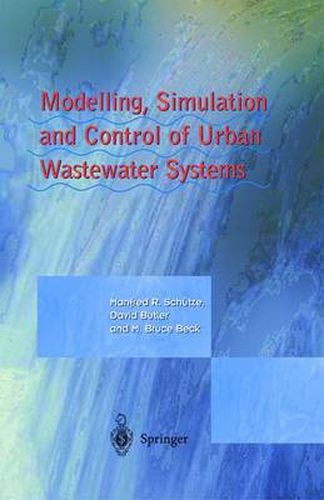Readings Newsletter
Become a Readings Member to make your shopping experience even easier.
Sign in or sign up for free!
You’re not far away from qualifying for FREE standard shipping within Australia
You’ve qualified for FREE standard shipping within Australia
The cart is loading…






This title is printed to order. This book may have been self-published. If so, we cannot guarantee the quality of the content. In the main most books will have gone through the editing process however some may not. We therefore suggest that you be aware of this before ordering this book. If in doubt check either the author or publisher’s details as we are unable to accept any returns unless they are faulty. Please contact us if you have any questions.
by Professor Poul Harremoes Environmental engineering has been a discipline dominated by empirical approaches to engineering. Historically speaking, the development of urban drainage structures was very successful on the basis of pure empiricism. Just think of the impressive structures built by the Romans long before the discipline of hydraulics came into being. The fact is that the Romans did not know much about the theories of hydraulics, which were discovered as late as the mid-1800s. However, with the Renaissance came a new era. Astronomy (Galileos) and basic physics (Newton) started the scientific revolution and in the mid-1800s Navier and Stokes developed the application of Newtons laws to hydrodynamics, and later, St. Venant the first basic physics description of the motion of water in open channels. The combination of basic physical understanding of the phenomena involved in the flow of water in pipes and the experience gained by trial and error , the engineering approach to urban drainage improved the design and performance of the engineering drainage infrastructure. However, due to the mathematical complications of the basic equations, solutions were available only to quite simple cases of practical significance until the introduction of new principles of calculation made possible by computers and their ability to crunch numbers. Now even intricate hydraulic phenomena can be simulated with a reasonable degree of confidence that the simulations are in agreement with performance in practice, if the models are adequately calibrated with sample performance data.
$9.00 standard shipping within Australia
FREE standard shipping within Australia for orders over $100.00
Express & International shipping calculated at checkout
This title is printed to order. This book may have been self-published. If so, we cannot guarantee the quality of the content. In the main most books will have gone through the editing process however some may not. We therefore suggest that you be aware of this before ordering this book. If in doubt check either the author or publisher’s details as we are unable to accept any returns unless they are faulty. Please contact us if you have any questions.
by Professor Poul Harremoes Environmental engineering has been a discipline dominated by empirical approaches to engineering. Historically speaking, the development of urban drainage structures was very successful on the basis of pure empiricism. Just think of the impressive structures built by the Romans long before the discipline of hydraulics came into being. The fact is that the Romans did not know much about the theories of hydraulics, which were discovered as late as the mid-1800s. However, with the Renaissance came a new era. Astronomy (Galileos) and basic physics (Newton) started the scientific revolution and in the mid-1800s Navier and Stokes developed the application of Newtons laws to hydrodynamics, and later, St. Venant the first basic physics description of the motion of water in open channels. The combination of basic physical understanding of the phenomena involved in the flow of water in pipes and the experience gained by trial and error , the engineering approach to urban drainage improved the design and performance of the engineering drainage infrastructure. However, due to the mathematical complications of the basic equations, solutions were available only to quite simple cases of practical significance until the introduction of new principles of calculation made possible by computers and their ability to crunch numbers. Now even intricate hydraulic phenomena can be simulated with a reasonable degree of confidence that the simulations are in agreement with performance in practice, if the models are adequately calibrated with sample performance data.